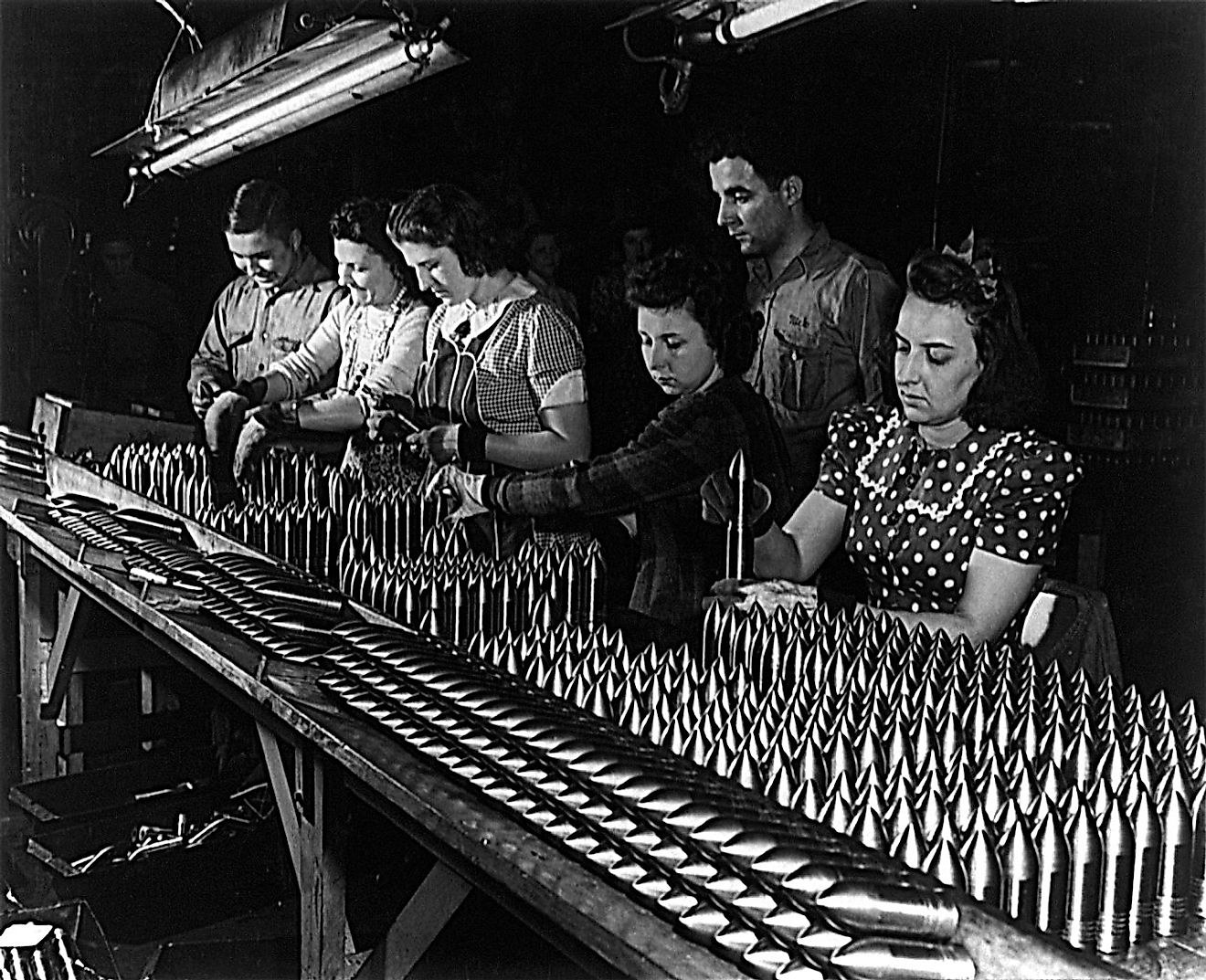Key Facts About Working Women In America

- According to the Women’s Bureau of the US Department of Labor, women have been part of the workforce for more than 100 years.
- The technological revolution of the 1920s freed women of the drudgery of housework and allowed women to pursue careers and endeavors outside the home.
- The famous image of Rosie The Riveter, that is still used today to represent the empowerment of women was originally used as part of a campaign to recruit more women during the second world war.
- According to a study, working women now who are doing the same job as men with the same qualifications are still earning less. Women only make $0.81 for every dollar a man makes.
Women have been contributing their skills, knowledge, and talents to the US economy for many years. Aside from running households, many are also running corporations, organizations, and institutions throughout the US.
The country saw the emergence of women leaving their homes to find employment at the start of the century so much so that government thought it best to establish a department solely dedicated to serving the needs of working women. On June 5, 1920, the Women’s Bureau of the U.S. Department of Labor was established. Its main duty is to “formulate standards and policies which shall promote the welfare of wage-earning women, improve their working conditions, increase their efficiency, and advance their opportunities for profitable employment.” The bureau and working women in the US have gone a long way since then.
Here, we give you a list of facts you may not know about working women in America.
10. They Have Been In The US Workforce For More Than 100 Years
According to the Women’s Bureau, women have been part of the workforce for more than 100 years. Before the first World War, three-fourths of all working women working for manufacturing companies spent their days making apparel, its materials, tobacco products, and food. When World War I started, the range of occupations expanded since many men had to go out to war, women took over many other jobs. “[Although] they remained concentrated in occupations such as domestic and personal service, clerical occupations, and factory work,” the bureau explains.
9. Technological Advancements Freed Women of Housework And Allowed Them To Work Outside The Home
The technological revolution of the 1920s brought electricity and more technological innovations to homes. Appliances such as washers, electric irons, and refrigerators among many others freed women of the drudgery of housework. For the first time, they were able to enjoy more time to pursue leisure, studies, and work. In a way, technology allowed women to pursue careers and endeavors outside the home. In 1920 women made up to 20% of the US total workforce.
8. Women Stepped In During the Second World War

Widespread enlistment saw thousands of men leave the country to join the war. This left many jobs that needed to be done open, and so the government encouraged women to step in. Many women answered the call and played a critical role during World War II. From 1940 to 1945 hundreds of women joined the workforce while the men were away fighting in the war. For the first time in history, they were given access to jobs previously held by men.
7. Rosie The Riveter Was Used During A Campaign To Recruit More Women

The famous image of Rosie The Riveter, that is still used today to represent the empowerment of women was originally used as part of a campaign to recruit more women during the second world war. The Rosie The Riveter campaign was splashed all over movies, newspapers, and posters. It called for women to join the war by helping build ships and aircraft or drive trucks and serve as laboratory technicians. It was one of the most successful campaigns in US history so much so that from 1940 to 1945 the participation of women in the workforce increased from 27% to 37%. And by 1945 one in every five married women in the US held a job.
6. After World War II Women Stayed In The Workforce
After the war, men came home but women were never the same again. Once they got a taste of their earning power, many didn’t want to go back. While others understood that their jobs were temporary and left after men came back post-war, it was undeniable that all of them learned to become more self-sufficient. They learned skills and managed to take on roles they’re never done before. It was an awakening that paved the way for the women’s movement more than a decade later.
5. The Women’s Movement of The 60s and 70s Opened More Doors For Women In The Workplace
Also known as the feminist movement, the women’s liberation movement was a campaign in the 60s and 70s that fought for equal rights for women. Among other things, they pushed for equal opportunity in employment and education for all women, for the end of gender discrimination in the workplace, and maternity leave rights, among others. This demand for equal treatment for women especially in the workplace paved the way for many women who wanted to pursue careers. After the success of the women’s movement, many flocked to universities to get educated and even more joined the workforce even occupying jobs previously held exclusively by men.
4. Women Are Now Half The Labor Force

Decades after the ground-breaking women’s movement of the 60s and the 70s women are occupying more jobs so much so that in January 2020 the US Bureau of Labor Statistics reported that women are holding more jobs than men, up to 50.4% of all paid positions in the US to be exact. According to the report in December 2019, 109,000 more women were working than men. Experts believe that women are set to dominate the labor market and occupy more leadership roles with a notable increase in the number of women pursuing advanced studies in recent years.
3. Women Still Make Less Than Men

While more women are working, they are still earning less. According to the latest Gender Pay Gap Report for 2020 by compensation platform company PayScale, women still earn less than men. “The gender pay gap is wider for women of color, women in executive-level roles, women in certain occupations and industries, and some US states.”In 2020, women only make $0.81 for every dollar a man makes. The median salary for men is around 19 percent higher than the median salary of men. Women who are doing the same job as men with the same qualifications are still earning less.
2. Women Remain Underrepresented In Management

Research by Leanin.org and Mckinsey has found that women are still significantly underrepresented in leadership positions in many companies in the US. While the number of women in senior leadership roles since 2015 has slightly risen, women are still underrepresented at every level. “For every 100 men promoted and hired to [be a] manager, only 72 women are promoted and hired.” Today,62 percent of manager-level positions are held by men while only 38 percent are occupied by women.
1. Participation in the US Board Seats Remain Low

According to a study by research company Diligent, while many women are starting to join boardrooms in the last three years, overall participation remains low. “Only 22% of corporate directors are women,” the research has found. There is still a lot of work to be done to reach gender parity in terms of overall board membership and board leadership. Women are inching towards leadership positions but there is still much work to be done to make sure women’s voices are included in many company’s decision-making processes.











